As far as Chromebooks go, Lenovo's Flex 5 Chromebook seems to get the job done. It's a convertible with a 13.3-inch Full HD display, it has an Intel Core i3 processor, and it weighs in at less than three pounds. All of that comes in at a price of just over $400.
It also has pen support, although the pen isn't included with the device to keep costs down. And with pen support comes an improved tablet mode in Chrome OS, something that we first talked about when I reviewed the Chromebook Duet.
Specs
| CPU | Intel Core i3-10110U (2C / 4T, 2.1 / 4.1GHz, 4MB) |
|---|---|
| Graphics | Intel UHD Graphics |
| Memory | 4GB Soldered DDR4-2666 |
| Display | 13.3" FHD (1920x1080) IPS 250-nit glossy 10-point multi-touch |
| Storage | 64GB eMMC 5.1 |
| Wireless | Intel Wi-Fi 6 AX201, Wi-Fi 2x2 802.11ax + Bluetooth 5.0 |
| Ports | (1) USB 3.1 Type-A Gen 1 (2) USB 3.1 Type-C Gen 1 (1) Audio Combo Jack (1) MicroSD card reader |
| Camera | 720p HD camera, 1.0MP |
| Audio | HD audio, 2W x 2 stereo speakers |
| Battery | Integrated Li-Polymer 51Wh battery (10hrs.) |
| Body | 12.20x8.34x0.70" (310x212x17.95mm), 2.97lbs (1.35kg) |
| Color | Graphite Grey |
| Material | Display cover: Aluminum, Bottom: PC/ABC plastic |
| Price | $409.99 |
Day one
Design
Flex isn't a brand that comes by my desk very often. Lenovo typically uses it when it wants to call a Yoga convertible something else in the United States. That's why it's so odd that I've been sent three Flex units in the past few weeks. There's this one, the Flex 5 (Windows), and the Flex 5G. And they all share a similar design.
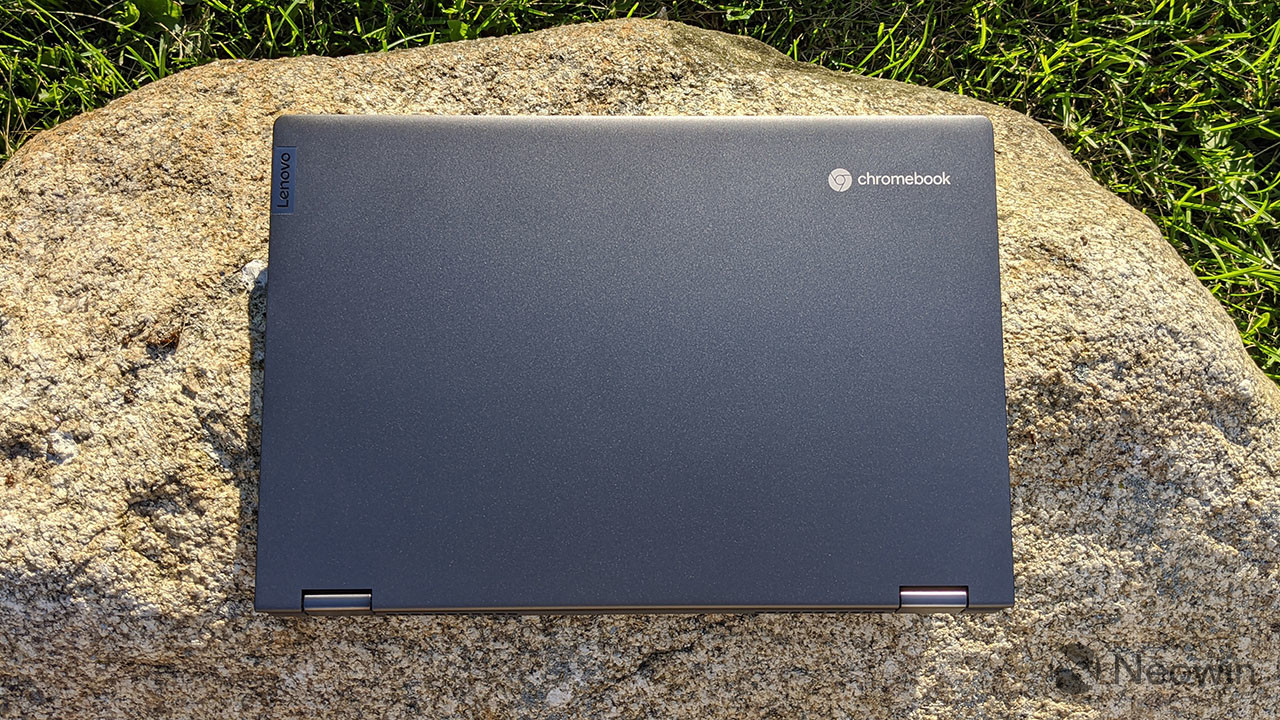
The Flex 5 Chromebook comes in a color called Graphite Grey, and part of the materials is the same as on the Windows Flex 5 that I reviewed recently. The lid is different, as it was plastic on the Windows model and it's aluminum here, but the bottom is polycarbonate on both. And boy do I love me some polycarbonate. It's durable, it's stylish, and it's something that you just don't see much.
The polycarbonate bottom gives it a sort of two-tone look, with a metallic feel on the aluminum lid and a matte texture on the bottom. It also makes for a comfortable palm rest, in this reviewer's opinion.
The lid is somewhat dull-looking, which is always the case for a Flex, and that's because there is no Flex branding. It's usually just a Yoga with the Yoga logo removed, so the lid ends up looking empty. As usual, there's a Lenovo logo tucked to the side, and of course, there's now Chromebook branding on the lid.

The polycarbonate base has a solid selection of ports on the sides. On the left, there's a USB 3.1 Gen 1 Type-C port and a USB 3.1 Gen 1 Type-A port, along with a 3.5mm audio jack and a microSD card slot. On the right side, there's another USB 3.1 Gen 1 Type-C port, along with the power button and volume rocker.

There are a couple of things that I really like here, and I want to give them a shout-out. First of all, the fact that there are USB Type-C ports on either side of the device is awesome. That means that you can charge it from either side. Most PCs have both ports on the same side, so depending on where your outlet is, it can always get inconvenient. This is a choice that I've seen on Chromebooks before, from companies that make their Windows PCs differently. I assume it's something that Google requests.
The other thing that I really like is the physical volume rocker, something that gets omitted far too often on convertibles. When using it as a tablet, it's nice to have a proper switch to use for controlling the volume.
Display and audio
The Lenovo Flex 5 Chromebook includes a 13.3-inch 1080p 16:9 display. In general, it's fine. It's also nothing to write home about. The colors are accurate unless you're viewing it from over 75 degrees or so.

It's not very bright though, coming in at just 250 nits. This is fine for standard indoor use, although it's a real pain to work with outdoors. The screen is particularly glossy as well, which doesn't make it any easier. I tend to bring this up because I think that with the trend of working from home, we might tend to step outside on a balcony or our backyard just to get some fresh air while working. I know I do.
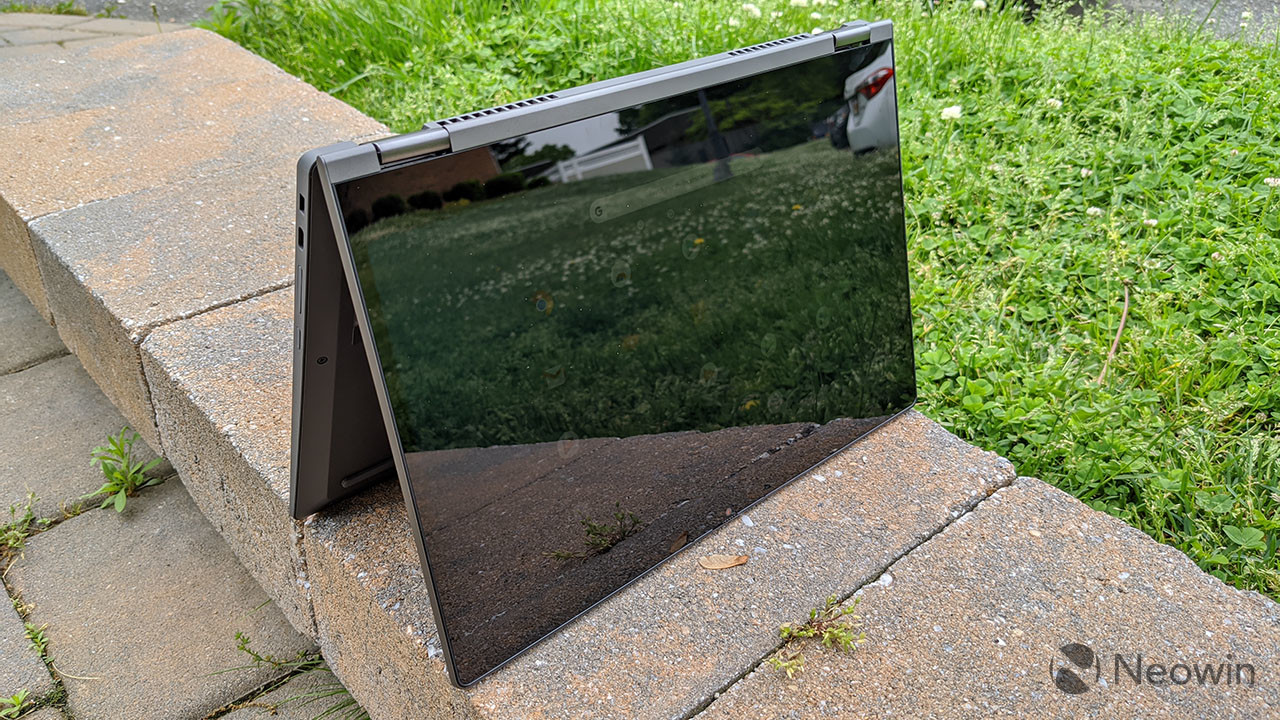
The screen supports 10-point multitouch, which you'd expect from a convertible. It has pen support as well, although the pen is sold separately. This is a common method when it comes to budget convertibles. It allows for the devices to be sold for a bit less, and I'm all for it. It lowers the barrier of entry, and if you want a pen later on, you can always buy one. I definitely advocate using a pen, since Chrome OS has the benefit of offering Android apps, many of which, like OneNote, support pen input.

As far as bezels go, it's pretty medium-sized on the sides, making for a larger top bezel and a big chin. The top bezel does include the webcam and a privacy guard, which is always nice if you're the type to put a piece of tape over it.

The Flex 5 Chromebook has two 2W stereo speakers, which sit on either side of the keyboard. This is nice for when you're using it as a laptop, since the speakers are firing up at you. Of course, if you're using it as a tablet, they're firing away from you. The audio quality is pretty solid, and it's surprisingly loud for such an inexpensive device.
Keyboard and trackpad
This keyboard is different from any Lenovo keyboard that I've used in the several years that I've spent reviewing its products. It's not that it's bad, but it's different, so I wouldn't go for the "Well it's Lenovo so the keyboard must be good" stamp of approval that I'm typically happy to provide.

For one thing, these are Chiclet-style keys, rather than the ones with curved sides that we see on every other Lenovo PC. I'm told that Google requested this, and I'm not surprised, since Lenovo wouldn't break from its own design language like that. Oddly enough, the Chromebook Duet had the rounded keys.

The keys also have more depth than a standard Lenovo consumer ultrabook or convertible. The keyboard is comfortable to use, even if the keys might have just a bit too much resistance. It's accurate too, not dropping any keystrokes or anything like that. I do like the keyboard; it's just not a regular Lenovo keyboard.
The trackpad is fine. Lenovo made use of most of the available real estate on the palm rest, so it doesn't feel small or anything, and it does feel responsive. I used a mouse most of the time though, because I just hate Chrome OS gestures. It's actually possible to pull up the app drawer by swiping down with two fingers, and then if you do it again, it just closes it instead of going to the next page. That's just my own annoyance with it though.
Chrome OS and performance
Chrome OS is known for offering better performance with lesser specs than on a Windows PC, and with a Core i3-10110U and 4GB of RAM in the Flex 5, I have to agree. Aside from the lack of apps that I use in my normal work flow like Adobe CC, I was able to work with no problems or notable lag. This is with the laptop hooked up to dual monitors.
One thing that's fairly new is Chrome OS's new tablet mode. Unlike Windows 10, it doesn't ask before it enters tablet mode; it just does it. When that happens, any apps that you're using go full screen, and if there aren't any apps open, the app drawer opens.

But that's not all, because Chrome OS now has gestures to control the OS, and they work exactly the same as they do on Android. That means that you can swipe up to go home, swipe up a bit to pull up the dock, swipe up and hold to go to recent apps, and swipe in from the side to go back. Using the same gestures as Android makes things easy to get used to, and it makes me wonder what Microsoft was thinking when Windows 8 and Windows Phone 8 worked completely differently.
As far as apps go, your best bet on Chrome OS is to use web apps wherever possible, and honestly, that's not that hard. Most productivity and entertainment applications have a web interface. That includes things like Microsoft Office, Netflix, Apple Music, and much more. If there is no web app, you can always go to Android apps, as you do get the full power of the Google Play Store.
Android apps do tend to run into issues though, as a lot of apps really aren't optimized for big screens. Also, you'll run into performance issues a lot faster if you're running multiple Android apps, versus if you have a lot of tabs open in Chrome or if you're running independent Chrome apps. Still, it's really nice to have that option of having Google Play fill in those app gaps.
Battery life is fantastic, as you'd expect from a device like this. Lenovo promises up to 10 hours, and it comes close. The nice thing about Chrome OS is that there's not a lot of variance on what you can do. You'll mostly be working from the Chrome browser, and that's it.
The one thing that I really don't like is just how locked into Google services you are with a Chromebook. You can't swap out Google Drive for OneDrive, or even swap out Chrome for another browser. I know what you're thinking, which is that if you don't want to use Google services, why buy a Chromebook? The problem is that every other desktop OS gives you more freedom.
Conclusion
The Lenovo Flex 5 Chromebook checks all of the right boxes for something that comes in at just over $400. It's a convertible with an FHD display that has pen support, it has a 10th-generation Intel Core i3 processor from the Comet Lake family, and well, that's about it.
It's important to remember that while the Flex 5 packs a lot of value for a $409 Chrome OS convertible, it's still a $409 PC. It has 4GB of RAM, which will be fine for most people using Chrome OS, but it will start to choke up if you try to push it. The pen doesn't ship in the box either, so that will be an additional expense if you want it. Also, I really do wish that the display was brighter than 250 nits.
One of the things that really impressed me is what I'm calling the small things. For example, I love that there are USB Type-C ports on both sides, so you're not committed to charging from the same side all the time. I also love that there's a volume rocker, making it easy to adjust the sound while using it as a tablet.
A convertible with pen support on its own is a versatile machine. You can use it from anything from taking handwritten notes or watching Netflix in tablet mode, to using it as a laptop. At $409, it's a matter of checking the right boxes, and the Flex 5 really does. If you want to check it out, you can find it on Amazon.

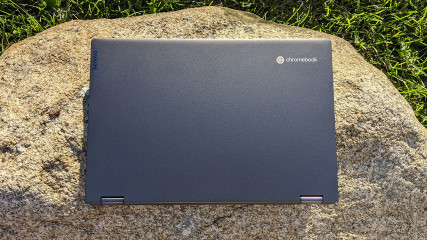

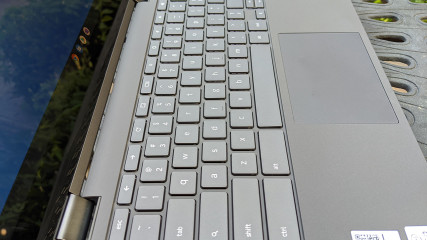
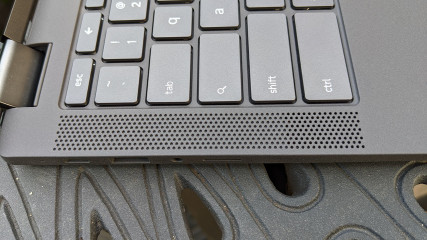
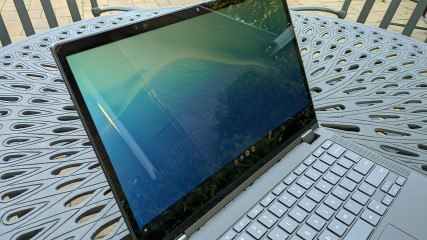

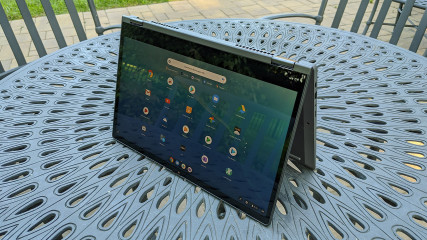
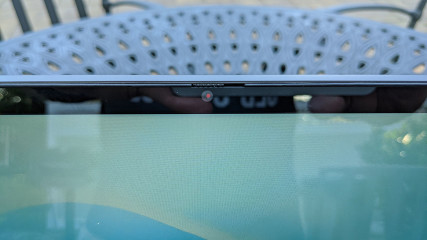
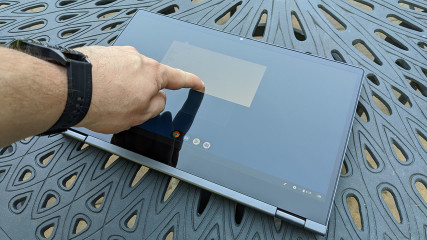

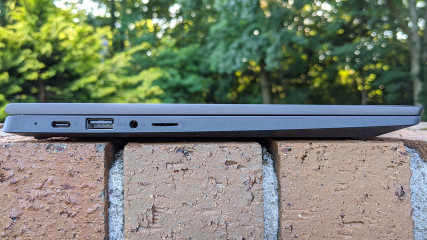









4 Comments - Add comment